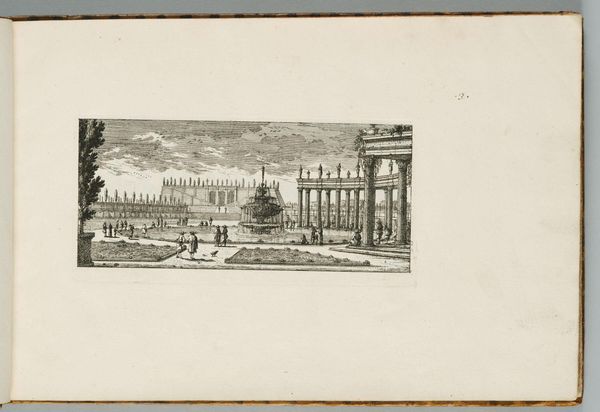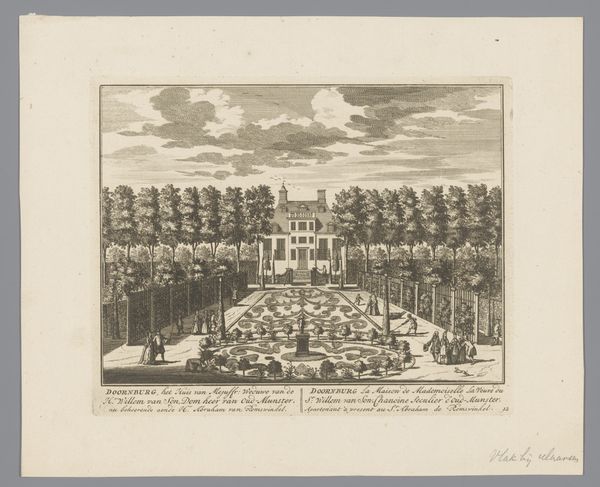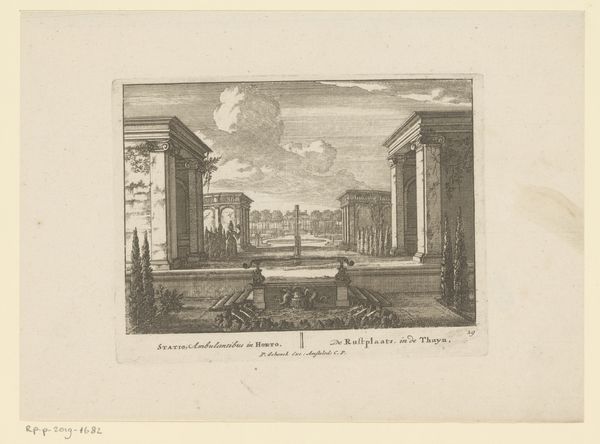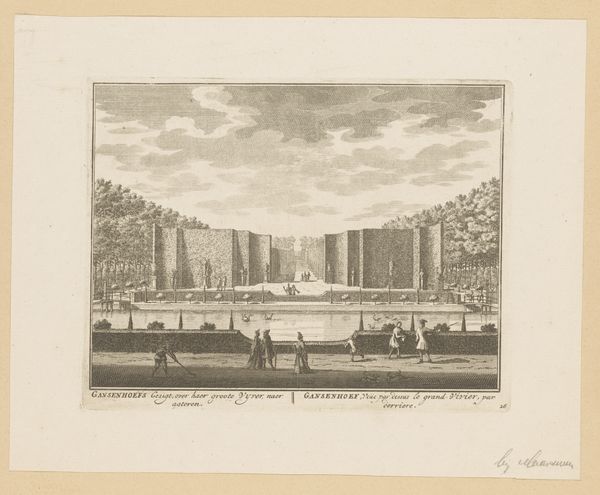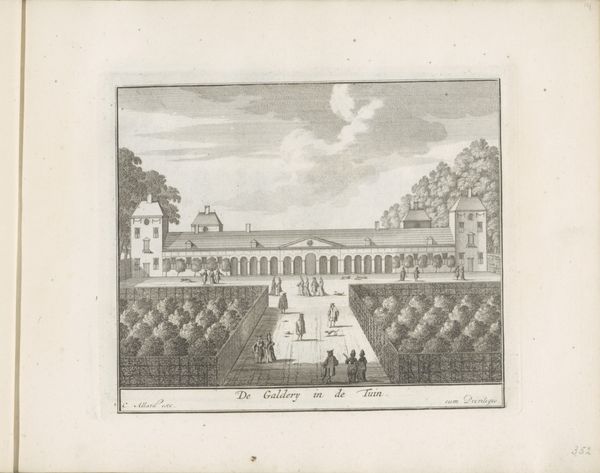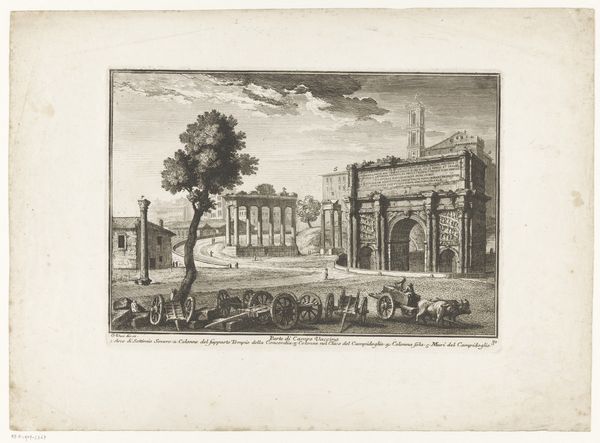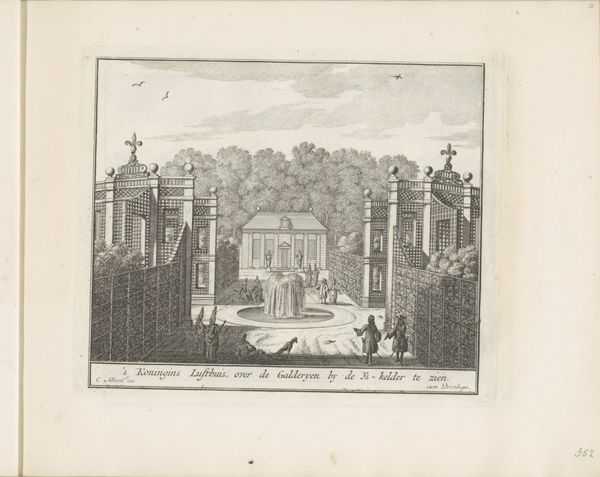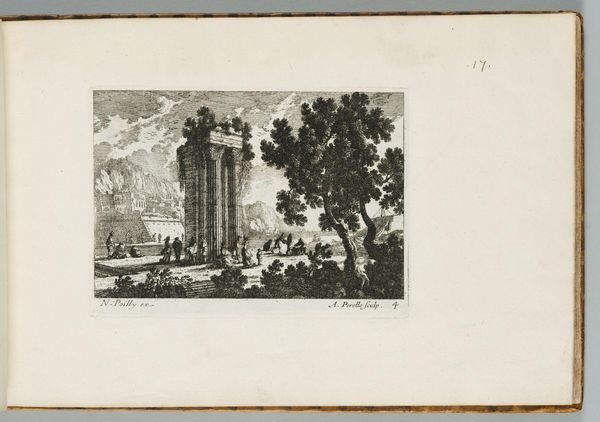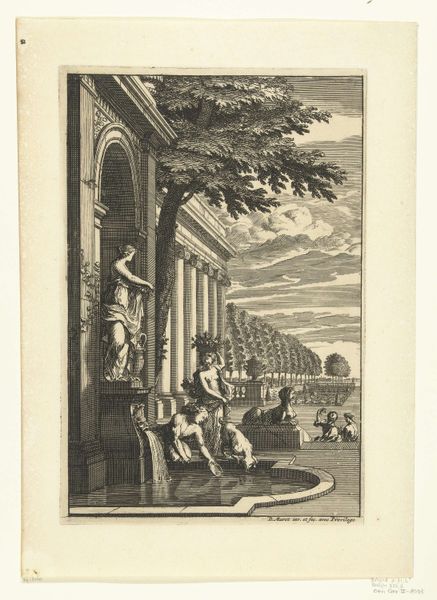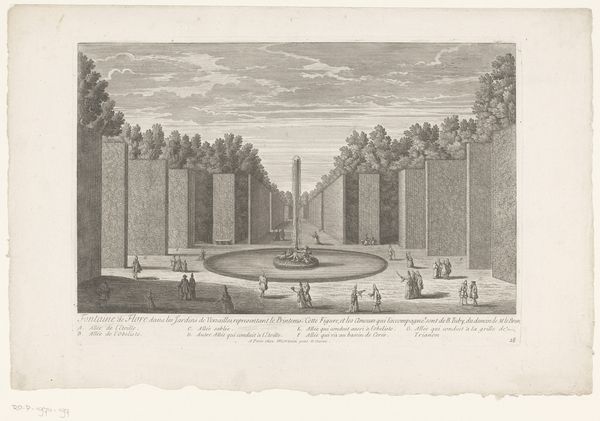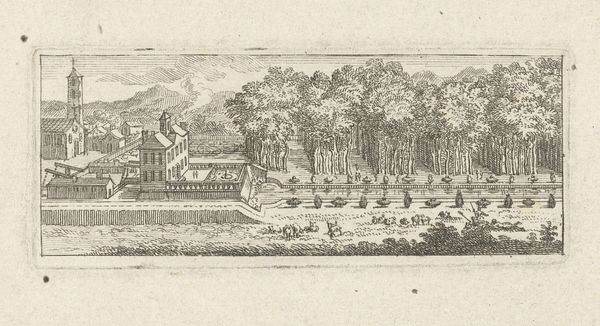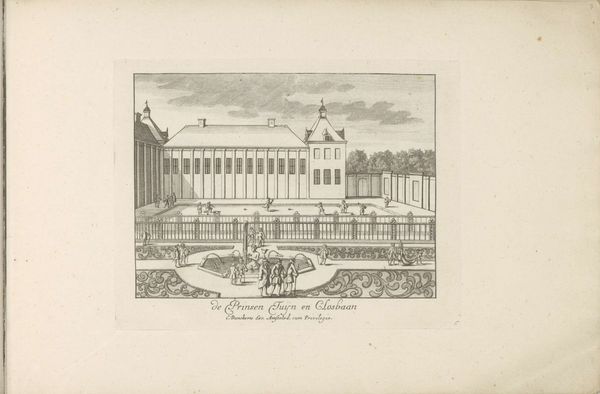
Gezicht op het amfitheater in de tuin naar Paleis Het Loo 1696 - 1718
0:00
0:00
drawing, print, ink, engraving
#
drawing
#
baroque
# print
#
pen sketch
#
landscape
#
ink
#
cityscape
#
engraving
Dimensions: height 142 mm, width 180 mm
Copyright: Rijks Museum: Open Domain
Editor: This is "Gezicht op het amfitheater in de tuin naar Paleis Het Loo" by Cornelis Danckerts II, created sometime between 1696 and 1718. It's an ink and pen drawing, giving a highly detailed view of this palatial garden. What immediately strikes me is the ordered, almost theatrical arrangement of the landscape. What can you tell me about it? Curator: The piece speaks volumes about the socio-political climate of the late 17th and early 18th centuries. Royal gardens like these were potent symbols of power and control. The strict geometric layout, as meticulously captured by Danckerts, projects an image of a ruler's ability to impose order on nature itself. Notice how the architecture of the garden mirrors and reinforces the architecture of the palace, a visual reminder of the state's influence. Editor: That’s interesting, because I initially just saw beauty and symmetry. I didn’t consider the political implications of such ordered landscaping. Does the artist’s choice of a print medium instead of, say, paint, have any relevance? Curator: Absolutely. Prints allowed for wider dissemination of these images. This view of Het Loo could be reproduced and distributed, effectively broadcasting the image of a powerful and sophisticated Dutch monarchy, not just within the Netherlands but across Europe. So the medium reinforces the political message by increasing its reach. Who was this being sent to? What was the message? These are the questions an art historian is trained to ask. Editor: So, it’s almost like early propaganda, then? Showing off wealth and power. Curator: You’ve grasped it. The visual language of Baroque art was inherently tied to power structures. The act of viewing this image then becomes a participation, even if passive, in upholding those structures. How might the purpose of royal imagery affect modern political views, do you think? Editor: I hadn’t really considered that the image was working to uphold political structures; that’s something to think about. Thanks for your insight! Curator: My pleasure. Examining art through the lens of history provides a critical understanding of our present.
Comments
No comments
Be the first to comment and join the conversation on the ultimate creative platform.
